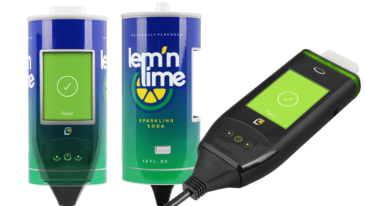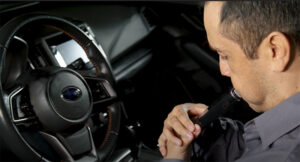
In 2016, 10,497 people in the United States were killed in motor vehicle accidents involving alcohol-impaired driving. That accounted for about 28 percent of all traffic-related deaths in the country that year.
In the constant battle against drunk driving, the United States has developed a wide range of tools, laws, and regulations to punish those who drive drunk while simultaneously discouraging others from driving impaired in the first place. Statistics show that drunk driving is on a long-term decline thanks to many of these safety initiatives. While drunk driving fatalities have gone down by about 50 percent since 1982, data shows a 1.7 percent increase from 2015 to 2016, suggesting that we still have a way to go.
One of the most prominent tools in the fight against alcohol-impaired driving is the breathalyzer, used by both police officers and in ignition interlock devices (car breathalyzers). Breathalyzers measure your blood alcohol content (BAC). Read on to learn more.
Understanding Blood Alcohol Content
You may be wondering, “How do breathalyzers measure alcohol?” Blood alcohol content, which is also sometimes known as blood alcohol concentration, is the measure of alcohol in your blood. It is expressed as a percentage of the weight of ethanol (in grams) per 100 milliliters of blood. For example, a BAC of 0.05 percent indicates that you have 0.05 grams of alcohol per 100 milliliters of blood in your body.
Police officers and all governing bodies use blood alcohol concentration to determine a person’s level of impairment and inebriation. All states currently have their legal BAC limits set at 0.08 percent, meaning that if you are driving with a BAC of 0.08 or above, you are legally driving under the influence and can be arrested for it. In many states, commercial drivers cannot drive with a BAC of 0.04 percent or above. Anyone under the legal drinking age of 21 can be arrested with any amount of alcohol found in their system.
Blood Alcohol Content in Your Breath
So, how is blood alcohol content measured? As the name suggests, blood alcohol content is most accurately measured via a blood sample. However, the process of getting a driver’s blood sample and then evaluating that sample for its alcohol content isn’t exactly feasible for an officer of the law pulled over on the side of the road. Thankfully, blood alcohol concentration can be measured via someone’s breath.
When you drink alcohol, it is not immediately metabolized, nor does it change much chemically in the bloodstream, which is why it’s so easy to detect. As the blood passes through your lungs, the alcohol moves across membranes of the lung’s alveoli, which are small air sacs. As alcohol is volatile (meaning it will easily evaporate given your internal body temperature), some of it will naturally end up within the alveoli.
The amount of alcohol that concentrates in the alveolar air is directly related to the amount of alcohol in your blood. The ratio of breath alcohol to blood alcohol is about 2,100 to 1, meaning that 2,100 milliliters of alveolar air contains about the same amount of blood alcohol as 1 milliliter of blood.
How a Breathalyzer Works
There are actually a few different types of breathalyzers. The average breathalyzer involves a chemical reaction that is then measured and evaluated to determine your BAC. When you blow into a breathalyzer, your breath travels through a vial containing a mixture of silver nitrate, sulfuric acid, potassium dichromate, and plain water.
The silver nitrate acts as a catalyst to speed up the reaction as the sulfuric acid takes any alcohol in your breath sample and turns it into a liquid. The alcohol then reacts with the potassium dichromate, resulting in:
-
- Chromium sulfate
-
- Acetic acid
-
- Potassium sulfate
- Water
Dichromate (a reddish-orange) changes to the green color of the chromium sulfate based on this reaction. The severity of the color change determines how much alcohol is in your system. To actually calculate your BAC, the breathalyzer uses a photocell system, which essentially compares the reaction in the mixture to an untreated mixture in a separate vial. The photocell system moves a needle, and the officer has to operate a knob to move the needle back into place. Essentially, the more that they have to turn the knob, the higher the driver’s blood alcohol concentration. More modern breathalyzer devices use complex fuel cell technology to measure your BAC through your breath.
Breathalyzers used by police officers are required to undergo regular calibration and maintenance to ensure accuracy, but police will also use a variety of other methods to determine your level of impairment, including standard field sobriety tests. Don’t assume that you can easily trick an officer or a breathalyzer. If you have been enjoying adult beverages, either wait to get on the road or plan ahead. It can save you and everyone on the road a lot of trouble.
Now that you know what breathalyzers measure and how breathalyzers measure alcohol, be sure to stay safe on the road.
Sources:


